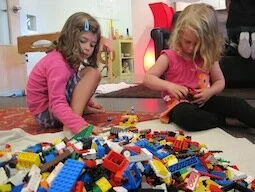Social and Emotional Development in Action
I am back in classrooms. Among my visits this week, were two in preschools. I was in Pre-K classrooms observing young learners. I was watching a specific learner in each of the classrooms. This is part of my work with their parents in choosing the right school. My observations help me identify learning inclinations, needs and areas of challenge for each child as part of identifying what kind of school would suit the child best going forward.
My observations rarely remain focused on just the one child. As I took in the classroom climate and culture, I couldn’t but help but realize the significance of social and emotional development. Over and over, I see that well-grounded, powerful social and emotional development has some of these characterisitics:
Children speak, teachers listen. Teachers sit down, look the child in the eye and listen. They listen to all the words, the facial expressions, the body language, all that is and is not being said clearly in words. Teachers make lots of room for listening when there are big feelings. They let the big feelings flow. Sometimes they let the child sit and be with the feelings, not necessarily working to resolve the feelings right away. They provide clear options for how the child can engage a process of moving ahead from the feelings but they don’t rush the child.Teachers don’t assign meaning to children’s words and feelings. Their words are treated as windows to the emotions that lie behind them. Emotions are real for the child having them. The windows are not shut out. The child is not shut out for having the emotions. She is not told what she should feel. Instead, she is heard for what she does feel.
Children speak to each other. There is chatter in the classroom. Children speak. They also listen to each other. They disagree and when they do, a teacher doesn’t step in right away. The children are given room to work it out. When they disagree, they are invited to listen to each other. Children ask for what they need, to take care of themselves. They advocate for themselves.
Hard questions, tough topics. Children feel safe enough to ask about and openly engage tough questions like skin color, gender roles, family structures, how babies are made, people with disabilities, economic means. Children as young as 6 months of age begin to discern and develop a preference for people of a skin color similar to them. Between the ages of three and four, their observations of the world and their desire to make sense of how it works prompts them to ask hard questions — “Why is her hair golden?” “Is golden hair better?” “How was I born? How was I made?” “What kind of chair is that man sitting in? Can I sit in it? Why not?” “Only boys can play with that. Not girls.” And so on.
Powerful, affirming social and emotional development implies making room for these questions, exploring them, not always providing a prompt answer but providing clear guidelines as needed for acting based on the questions. It also means that adult responses are not superficial, patronizing to the child or dismissive of their ability to engage the questions.
Play is serious work. Sensory development, dramatic play, collaborative play are all encouraged, valued and honored as are other forms of play. Play is seen as a child’s work. It is seen as serious work. Just as important as literacy and math skills. Children have ample (at least more than an hour at a time) open play time. Spaces are created for children to play by themselves and together. They are invited to get dirty, messy. They feel supported in working with other children, to get into fights and disagreements and to work through their disagreements.
The classroom is bustling with the voices of children, less so with the voice and instructions from a teacher. Instead, teachers are down on the ground, watching the children at play, not intervening. They are careful, steady, intense observers and researchers of children and their play.
If you are drawn to this kind of social and emotional development and are wondering which preschool classrooms have these characteristics, email me and I’ll share some names.
These characteristics carry forward in years to come. Social and emotional development does not end in Pre-K classrooms. They work continues and the characteristics expand in their definition but not their spirit in later years.




